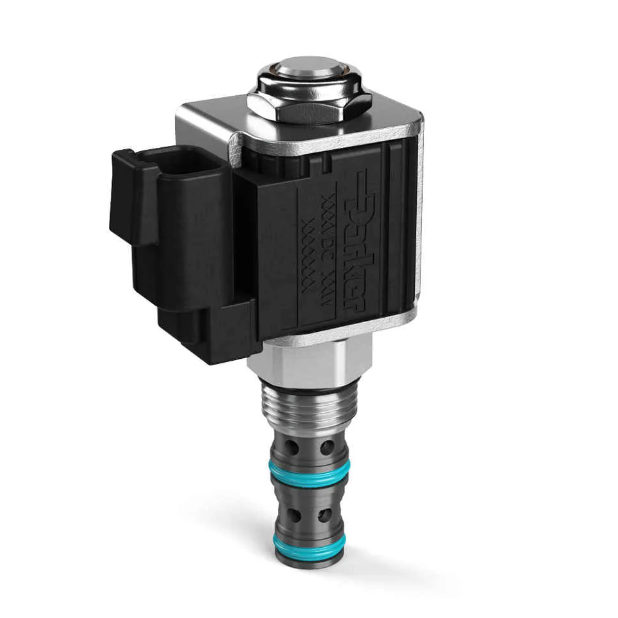Solenoid Valves
Understanding Solenoid Valves: Operation, Applications, and Benefits
M.Ben
8/18/20243 min read
Introduction to Solenoid Valves
Solenoid valves are essential components in various engineering systems, serving as the bridge between electrical control and fluid management. By converting electrical energy into mechanical energy, they facilitate the autonomous control of fluid flow in numerous applications. In this article, we will explore the structure, working principles, and applications of solenoid valves, emphasizing their significance in industrial contexts.
What is a Solenoid Valve?
A solenoid valve consists of two primary components: a valve body and a solenoid coil. The valve body is where the fluid flows, while the solenoid coil, located at the top, controls the valve's operation. This coil is energized by an electrical current, generating a magnetic field that operates the valve.
Solenoid valves are available in various shapes and sizes, designed to cater to different pressure levels and fluid types. Their unique design allows for efficient control of liquids and gases, making them versatile tools in fluid management.
How Do Solenoid Valves Work?
The operation of solenoid valves relies on electromagnetic principles. When an electrical current passes through the coil, it generates a magnetic field that affects the valve's internal components, typically an armature and a plunger.
Types of Solenoid Valves
There are two main types of solenoid valves: normally closed (NC) and normally open (NO). Each type operates differently based on the default position of the plunger.
Normally Closed (NC) Solenoid Valves
In NC solenoid valves, the plunger is held in a closed position by a spring. When the solenoid coil is energized, the magnetic field pulls the plunger upward, opening the valve and allowing fluid to flow. Once the current is cut off, the spring pushes the plunger back down, closing the valve.
Normally Open (NO) Solenoid Valves
Conversely, NO solenoid valves have the plunger in an open position by default. When energized, the magnetic field pushes the plunger down, closing the valve. The spring will return the plunger to its open position when the electrical current is stopped.
Applications of Solenoid Valves
Solenoid valves are ubiquitous in modern technology, with applications ranging from household appliances to industrial machinery. Below are some notable examples:
1. HVAC Systems
In HVAC systems, solenoid valves play a crucial role in controlling the flow of refrigerants. They are often found in refrigeration units, where they help manage the flow of hot gas during defrost cycles. By opening the valve, hot refrigerant can flow into the evaporator, melting any ice buildup and ensuring optimal system performance.
2. Commercial Refrigeration
Solenoid valves are commonly used in commercial refrigeration systems. They are typically located in the liquid line, controlling the flow of refrigerant to the expansion valve. This helps maintain the desired temperature and efficiency of the cooling system.
3. Industrial Applications
In industrial settings, solenoid valves are employed to manage fluid flow in production lines. They can control the precise mixing of liquids, such as in bottling plants, ensuring consistent product quality. Additionally, they can act as safety devices, shutting off flow in response to leak detection sensors, thus preventing waste and equipment damage.
4. Household Appliances
Many household appliances utilize solenoid valves for efficient operation. For instance, washing machines use these valves to control water intake, allowing for automated cycles without manual intervention. This enhances user convenience while optimizing water usage.
Benefits of Using Solenoid Valves
The adoption of solenoid valves in various systems offers numerous advantages:
Remote Operation: Solenoid valves can be controlled remotely, allowing for automated processes without the need for manual intervention.
Efficiency: They help streamline operations, enhancing overall system efficiency and reducing energy consumption.
Safety: By providing immediate response to control signals, solenoid valves can prevent accidents and equipment damage.
Versatility: Solenoid valves can handle various fluids, including gases and liquids, making them adaptable to numerous applications.
Conclusion
Solenoid valves are integral to modern engineering, bridging the gap between electrical control and fluid management. Their ability to operate autonomously and efficiently makes them invaluable in numerous applications across various industries. Understanding their operation, types, and applications helps engineers and technicians optimize their use, leading to improved system performance and reliability.
As technology continues to evolve, the role of solenoid valves will undoubtedly expand, paving the way for more innovative applications in the future. Whether in HVAC systems, commercial refrigeration, or industrial processes, solenoid valves will remain a critical component in the quest for automation and efficiency.


